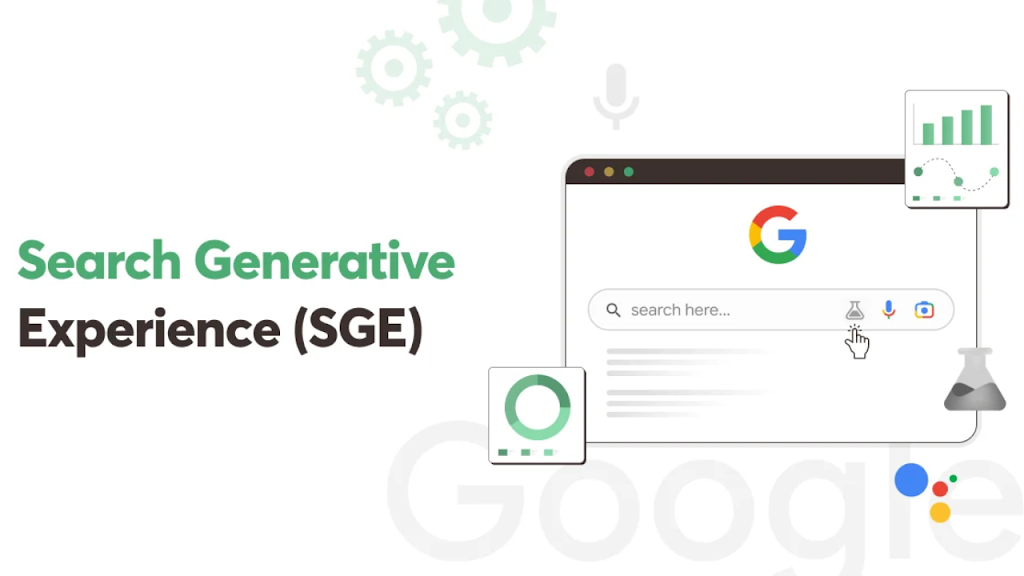Power of Search Generative Experience Optimization (SGE) In the dynamic realm of digital marketing, staying ahead of the curve requires innovative strategies that not only adapt to evolving trends but also redefine the way we approach optimization. Enter Search Generative Experience Optimization (SGE), a groundbreaking approach poised to revolutionize the way businesses engage with their audience through search engines. In this comprehensive guide, we delve into the intricacies of SGE, exploring its principles, benefits, and best practices. Understanding Search Generative Experience Optimization (SGE) SGE represents a paradigm shift in the realm of digital optimization, transcending traditional methods to focus on generating immersive and personalized experiences for users within search engine environments. Unlike conventional optimization approaches that primarily aim to enhance search rankings, SGE places paramount importance on crafting meaningful interactions that captivate and resonate with users, ultimately driving engagement, loyalty, and conversions. Key Components of SGE 1. Generative Content Creation: At the heart of SGE lies generative content creation, a process that goes beyond static content optimization to dynamically generate personalized experiences for users based on their search queries, preferences, and behaviors. By leveraging advanced AI-driven technologies, businesses can create content variations tailored to individual user contexts, thereby maximizing relevance and resonance. 2. Dynamic User Experience (UX): SGE emphasizes the importance of delivering dynamic user experiences that adapt in real time to user interactions and intents. From personalized search results and interactive elements to immersive multimedia content, dynamic UX elements enable businesses to engage users more effectively and foster deeper connections. 3. Semantic Search Understanding: Central to SGE is a deep understanding of semantic search principles, which involve analyzing the contextual meaning behind user queries and content. By deciphering user intent and semantic relationships, businesses can optimize content and experiences to better align with user expectations, driving higher levels of satisfaction and engagement. 4. AI-Powered Optimization: SGE harnesses the power of artificial intelligence (AI) to fuel optimization efforts, leveraging machine learning algorithms to analyze vast datasets, predict user behaviour, and optimize content delivery in real-time. Through continuous learning and adaptation, AI-driven SGE strategies enable businesses to stay agile and responsive in the face of evolving user needs and preferences. Benefits of SGE 1. Enhanced User Engagement: By delivering personalized and immersive experiences, SGE captivates users and encourages deeper engagement with brand content, resulting in longer session durations, increased page views, and higher interaction rates. 2. Improved Conversion Rates: SGE’s focus on relevance and resonance translates into higher conversion rates, as personalized experiences drive users closer to desired actions such as purchases, sign-ups, or inquiries. 3. Increased Brand Loyalty: Through consistent delivery of tailored experiences, SGE fosters stronger connections between brands and users, building trust, loyalty, and advocacy over time. 4. Better Search Engine Performance: While SGE prioritizes user experience, its holistic approach to optimization also yields positive impacts on search engine visibility and rankings, as search engines increasingly prioritize user-centric factors in their algorithms. Best Practices for Implementing SGE 1. Data-Driven Insights: Leverage data analytics and user insights to understand audience preferences, behaviors, and pain points, guiding content creation and experience optimization efforts. 2. AI-Powered Personalization: Invest in AI-driven technologies to dynamically generate personalized content and experiences tailored to individual user contexts and intents. 3. Continuous Testing and Optimization: Adopt a culture of experimentation, testing different content variations and experience elements to identify what resonates most with your audience and iteratively optimize performance. 4. Cross-Channel Integration: Integrate SGE efforts across multiple digital touchpoints, ensuring a cohesive and seamless user experience across search engines, websites, social media, and other channels. In an era where user expectations continue to evolve rapidly, Search Generative Experience Optimization (SGE) emerges as a transformative approach to digital optimization, redefining how businesses engage with their audience through search engines. By prioritizing relevance, resonance, and personalization, SGE enables businesses to create immersive and memorable experiences that captivate users, drive engagement, and ultimately propel success in the digital landscape. Embrace the power of SGE, and unlock new possibilities for your brand in the dynamic world of search.





